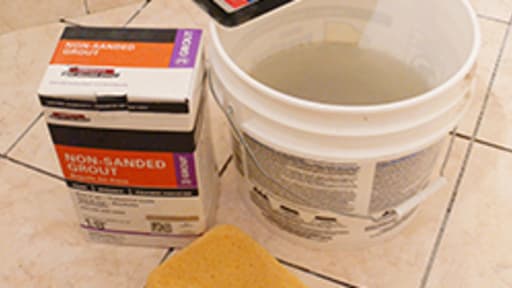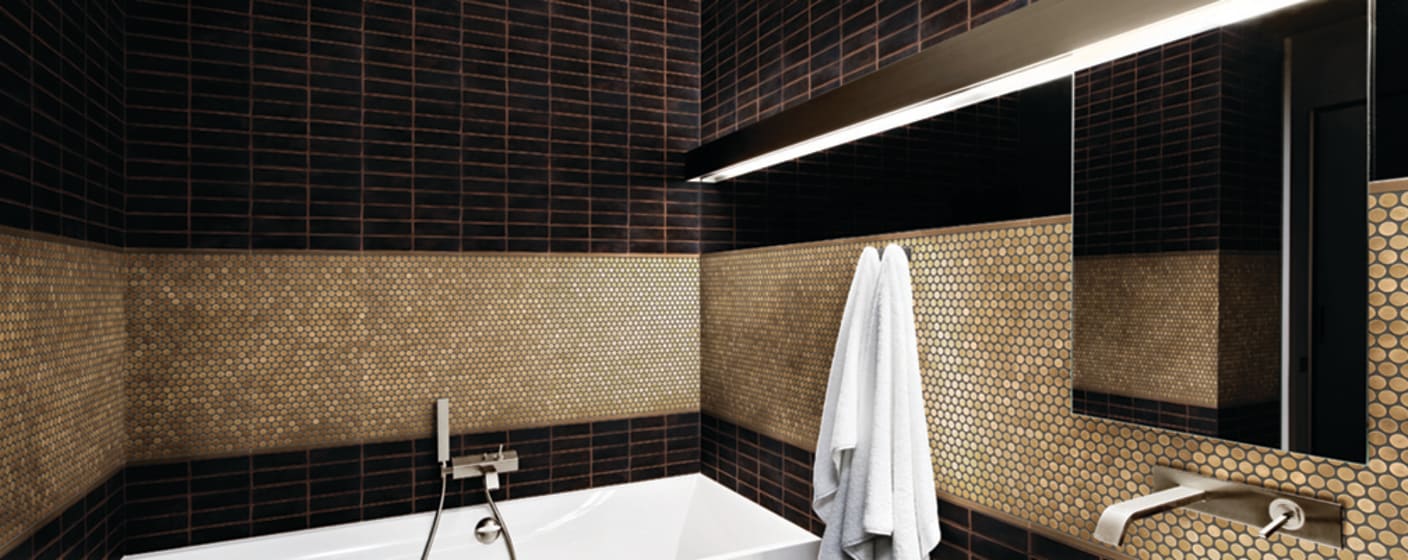Proper Grout Depth for Tile Floors
Posted by Anne G. on 7th Jun 2023
Replacing a tired, worn kitchen floor or backsplash is a solid home improvement that's sure to up your home's resale value.
It's also a nice little pick-me-up for you and your family. And while you have an abundance of flooring options from which to choose when it comes to a kitchen or bath remodel, tile is one of the most popular, because it's easy to maintain, affordable and gorgeous when correctly installed. It's also a versatile material that comes in a variety of forms, including:
- Natural stone — marble, limestone or slate. Travertine falls under this category.
- Porcelain — manufactured using feldspar and an extreme heat process. Porcelain is one of the hardest, most indestructible tiles available.
- Ceramic — crafted from baked clay.
- Glass — typically used for backsplashes and as a decorative accent in a mosaic.
A Job That Requires the Right Tools

While it is possible to install a tile floor or backsplash all by yourself, it's a time-consuming process that requires specialized tools. Don't kid yourself — grout is important. You'll need a high-powered drill with a paddle attachment for mixing thin-set and grout, a scoring tool with a carbide tip for cutting the backer board, and a grout float and special sponges with rounded corners for grouting. You'll also need a trowel that's sized to fit your tile. Don't even consider attempting the job without using the right tools, or you could end up as the Friday night feature on one of those do-it-yourself disaster shows.
Why Precision Is Important
You want your newly installed tile floor or backsplash to look nice, to wear well, and to add value to your home. If the installation looks like an amateur job, or your grout lines are all wrong, you're defeating all your goals. In order to check off all the boxes, you'll need to mix the thin-set and grout just right, apply it evenly, and give it time to cure. Tiles must be spaced evenly, using spacers, and weight must be kept off it while it sets.
When it comes time to grout, you'll need to apply the compound with a float and then go back over it with the rounded corner of a sponge or the float itself. This makes that nice, little concave indent in the grout. The shaping of the grout is important for aesthetic reasons; you always want grout to fall just a bit below the surface of the tile because the grout is much softer than the tile and needs that added little bit of protection from traffic. Otherwise, it will wear away before its time. It's also important to remember not to wash away too much of your grout during the shaping. You want it close to being flush with the tile edges; otherwise, you'll be able to both see and feel the corners of your tile when you walk over it. A higher-level of grout is also much easier to keep clean than grout lines that fall halfway down the tile.
Overall, it's best not to DIY your tile installation unless you have a good bit of experience in this area. Your kitchen remodel is too important to risk the negative side effects of an amateur tile job. Play it safe, and call in a pro instead.
About The Author
Anne G. specializes in writing articles, blog posts, press releases, product descriptions and marketing materials in a variety of fields. She enjoys researching, social media, landscaping, gardening and home renovation. Anne enjoys volunteering at her church, her children's school, and with the Boy and Girl Scouts of America.
The articles and other content contained on this website/blog are provided for informational purposes only and should not be relied upon for any purposes. While it is our goal to provide you with up-to-date, relevant and useful information on a wide range of topics, we make no representations or warranties of any kind, whether express or implied, concerning the reliability, suitability, completeness or accuracy of any of the information made available on this site. The articles and information contained on this site are not intended to provide legal, accounting or other professional or business advice and should not be treated as a substitute for the advice of a professional with knowledge of the facts and circumstances of your specific situation. By accessing this site, you agree that you will not seek to hold E.C. Barton & Company or any of its affiliates liable for any losses or unanticipated costs or assert any other claim based on your use of this site or on the reliance on the content contained herein.



